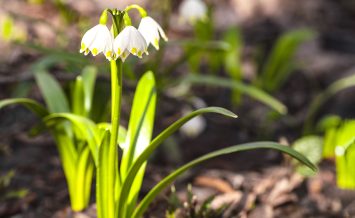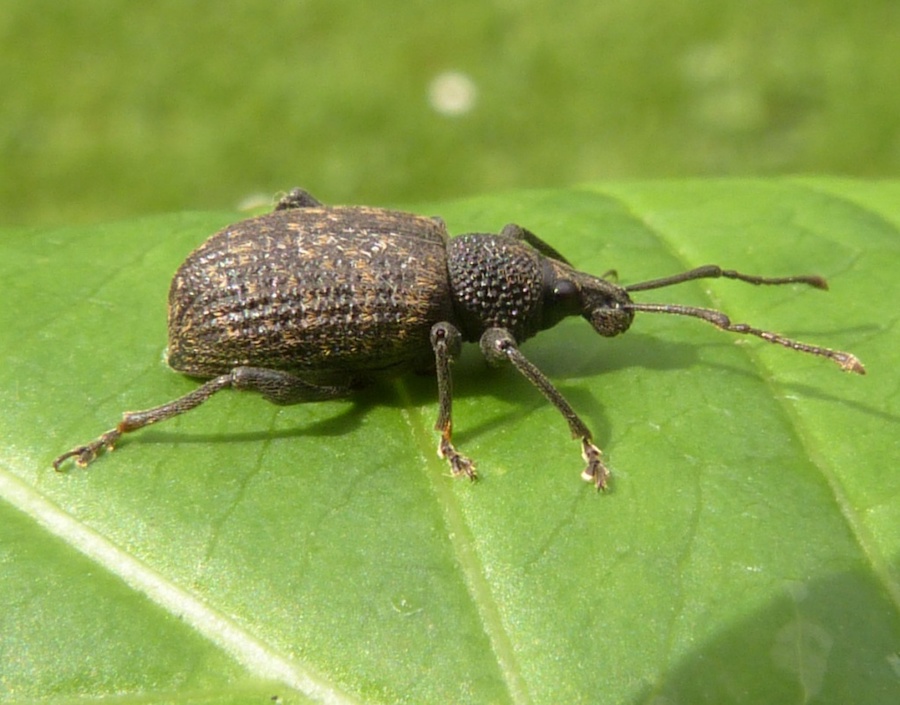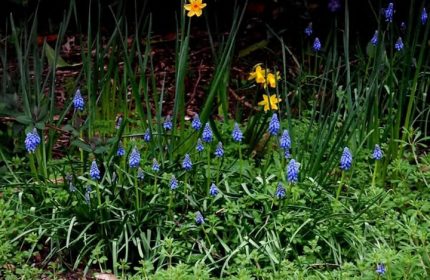What to do if you suspect vine weevils in your plant pots
Vine weevils have a notorious reputation for being indiscriminate feeders, targeting a wide range of ornamental plants.
However, it’s worth mentioning that they do have preferences for certain plant species. They are particularly attracted to plants with soft, broad leaves and those that thrive in containers or plant pots. Some of the plants that vine weevils often favour include:
- Ferns: Many types of ferns are susceptible to vine weevil damage due to their delicate fronds.
- Primroses and Heucheras: These plants are among the top choices for vine weevils, and they can cause significant harm if left unchecked.
- Fuchsias: Fuchsias are a favorite target due to their lush, green foliage and vibrant blooms.
- Strawberries: Both ornamental and edible strawberries can fall victim to vine weevils.
- Rhododendrons and Azaleas: These evergreen shrubs are susceptible to vine weevil larvae feeding on their roots.
- Lavender: Although known for their hardiness, lavender plants can still be affected, especially when potted.

Heuchera
If you suspect vine weevils in your plant pots, it’s crucial to take action promptly to protect your greenery. Here we outline the steps you should follow to deal with this garden menace.
Early identification

Vine Weevil damage
The first step in addressing a vine weevil problem is to accurately identify the issue. Signs of an infestation may include notched or irregularly shaped holes in leaves, wilting plants, and the presence of small, brownish-black beetles, especially during the evening hours. By spotting these indicators early, you can prevent further damage to your plants.
Inspect your plants
Carefully inspect your affected plants, including the soil in your plant pots. Vine weevils lay their eggs in the soil, and the larvae feed on plant roots, leading to significant damage. Gently remove the affected plant from its pot, shake off excess soil, and check for the presence of larvae or adult weevils. Dispose of any infested soil carefully.

Larvae
Biological control
Consider introducing natural predators of vine weevils, such as parasitic nematodes (Heterorhabditis megidis) or predatory beetles like Staphylinus erythropterus. These beneficial organisms can help control the weevil population in your garden.
Chemical control
If the infestation is severe or natural methods alone aren’t effective, you may need to resort to chemical control. Use insecticides labeled for vine weevils, following the manufacturer’s instructions carefully. Apply the treatment to the soil and around the base of affected plants. Be sure to choose a product that is safe for your specific plant species.
Repotting
To further prevent the spread of vine weevils, repot your affected plants in fresh, uncontaminated soil. Clean the pots thoroughly to eliminate any remaining eggs or larvae.
Monitoring
Keep a close eye on your plants in the weeks following treatment. Regularly inspect them for signs of vine weevil damage and the presence of adult weevils. Early detection and action can help prevent reinfestation.
Preventive measures
To minimise the risk of future vine weevil problems, consider implementing preventive measures. These include using weed-free compost, avoiding overwatering, and inspecting new plants for signs of infestation before adding them to your garden.
Dealing with vine weevils in your plant pots can be challenging, but with early detection and appropriate action, you can protect your garden from these voracious pests. By following the steps outlined in this feature, you can help ensure the health and vitality of your plants while keeping vine weevils at bay. Remember that a proactive approach to pest management is key to maintaining a thriving garden.



















